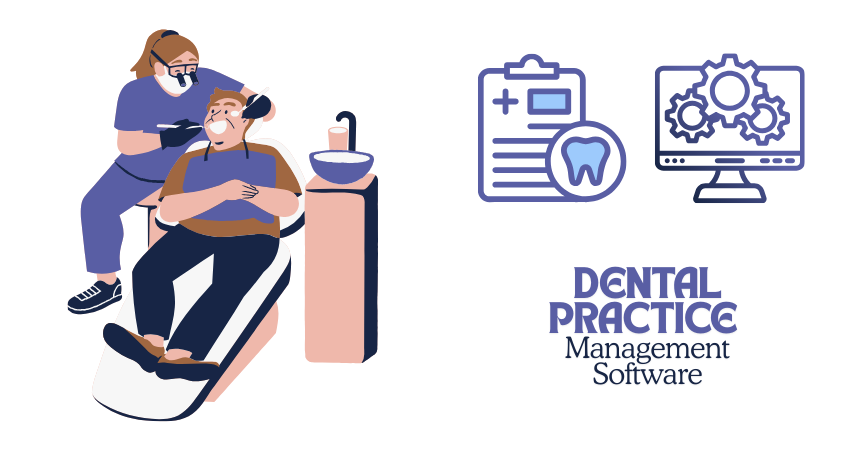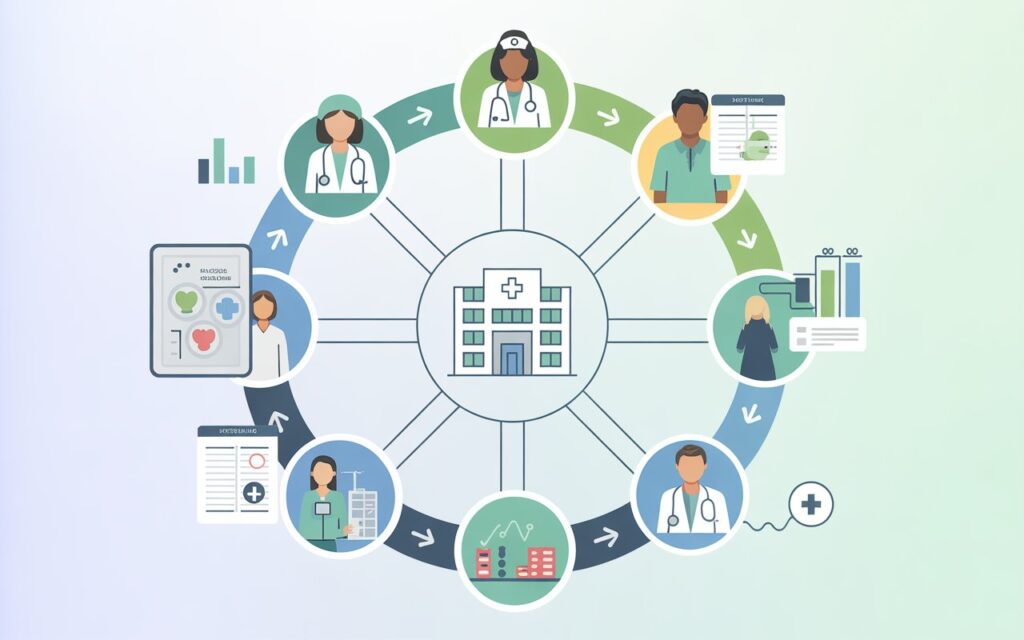In today’s rapidly advancing technological landscape, dental practices are increasingly turning to software solutions to streamline operations, enhance patient care, and improve overall efficiency. One of the most critical tools in this transformation is custom dental practice management software. But before embarking on this development journey, it’s essential to understand the costs involved in building such a solution. Many factors influence the cost, from the development process to the use of AI and ML technologies, making it vital to work with the right software development companies in Dubai or elsewhere to meet your specific needs.
This blog will break down the various factors that impact the cost of custom dental practice management software, offering insights into how businesses can balance features, budget, and development timelines.
What is Dental Practice Management Software?
Dental practice management software is a specialized solution designed to assist dental professionals in managing their practice operations, patient records, billing, appointment scheduling, inventory, and compliance. Custom software takes this a step further by offering tailor-made features designed to meet the unique needs of a specific dental practice.
Custom solutions provide greater flexibility and can integrate with other systems or tools that the practice already uses, making it a more seamless fit into daily operations. However, as with any custom-built software, the more tailored the solution, the higher the cost.
Factors Influencing the Cost of Custom Dental Practice Management Software
1. Scope of Features
The first factor to consider when calculating the cost of custom dental practice management software is the scope of features. Dental practices typically need software that can manage several core functionalities, including:
- Appointment scheduling: Automating patient scheduling, reminders, and rescheduling.
- Patient records: Managing digital patient files, dental histories, and treatment plans.
- Billing and insurance: Handling payments, insurance claims, and financial reports.
- Inventory management: Tracking dental supplies and inventory usage.
- Reporting and analytics: Generating reports on patient care, finances, and operational efficiency.
- Patient communication: Tools like SMS, email notifications, and patient portals.
A basic version of dental practice management software may include standard features such as appointment scheduling, patient records, and billing. However, more advanced versions may integrate features like artificial intelligence (AI) and machine learning (ML) to offer predictive analytics, patient behavior insights, or automated treatment suggestions.
The more advanced and specialized the features, the higher the cost of development. Practices with complex needs may require AI & ML capabilities to automate certain tasks, leading to higher upfront costs but potential long-term savings.
2. Custom vs. Off-the-Shelf Solutions
One of the primary factors that determine the cost is whether the software is custom-built or an off-the-shelf solution. Off-the-shelf software is typically less expensive upfront but lacks the flexibility to adapt to specific needs or integrate with other systems already in use.
In contrast, custom-built software is designed from scratch to meet the unique requirements of a dental practice. While custom software development is more expensive initially, it offers long-term benefits in terms of flexibility, scalability, and adaptability. Custom solutions ensure the practice has everything it needs without paying for unnecessary features, which often comes with off-the-shelf options.
3. Location of the Development Team
The geographical location of the development team also plays a crucial role in determining the overall cost. Software development companies in the UAE, for example, might offer competitive rates compared to those in Western Europe or North America. However, the cost can still vary significantly depending on the expertise and experience of the team.
For businesses located in the UAE, choosing a local development partner ensures that cultural, regulatory, and communication factors are well-understood, making the development process smoother.
4. Technology Stack and Integrations
The technology stack used to build the custom software significantly influences the cost. Technologies like AI & ML software development add complexity and cost to the project, as they require specialized expertise. Additionally, integrating with existing systems—such as electronic health records (EHR), billing software, or dental imaging software—adds another layer of complexity.
For instance, if a dental practice already uses several third-party tools, the custom software will need to integrate seamlessly with these platforms, which can drive up development time and costs.
5. Development Process and Timeline
The development timeline is directly tied to cost. A faster turnaround often requires a larger development team working on an accelerated schedule, which increases labor costs. Similarly, the development process plays a role in cost calculation. If a practice opts for agile development (a flexible, iterative approach to software development), it may incur different costs compared to a more traditional waterfall methodology.
Agile development, for instance, allows for regular feedback and revisions, which can lead to better outcomes but may also increase the number of development cycles and overall time spent on the project.
6. User Experience and UI/UX Design
The design of the software’s user interface (UI) and user experience (UX) is another cost factor. A well-designed interface ensures ease of use for both dental professionals and administrative staff. Investing in intuitive UI/UX can save time on training and improve staff efficiency, but it often requires the expertise of specialized designers, which increases the cost.
7. Post-Launch Support and Maintenance
Once the software is developed and deployed, ongoing support and maintenance are necessary to ensure its smooth operation. Custom software will need regular updates to fix bugs, adapt to new regulations, and incorporate new features. The cost of post-launch support can vary depending on the service level agreement (SLA) and the complexity of the software.
8. Security and Compliance
Dental practices handle sensitive patient information, making security and compliance with health data regulations (such as HIPAA in the U.S.) a top priority. Implementing advanced security features, such as data encryption, secure access controls, and regular vulnerability assessments, can increase development costs. However, investing in security is critical to protecting both patient data and the reputation of the practice.
How AI and ML Are Changing Dental Practice Management Software
Incorporating AI and ML into dental practice management software offers significant advantages, but it also raises the cost. AI can enhance predictive analytics, automating the scheduling process based on patient trends or optimizing inventory management by predicting supply needs.
Machine learning algorithms can be used to suggest personalized treatment plans for patients based on their dental history and previous outcomes, improving patient care and driving practice efficiency. These advanced features require specialized development skills and data handling capabilities, adding to the project’s complexity and overall cost.
However, the long-term benefits of integrating AI and ML into dental management software include improved accuracy, streamlined processes, and enhanced patient satisfaction, potentially providing a high return on investment (ROI).
Cost Breakdown of Building Custom Dental Practice Management Software
Now that we’ve covered the key factors influencing the cost, let’s break down the potential cost ranges for building custom dental practice management software:
- Basic Version (Basic features like appointment scheduling, patient records, and billing):
- Cost: $30,000 – $50,000
- Timeline: 3 to 6 months
- Advanced Version (Advanced features, including AI-powered analytics, treatment suggestions, and integrations with third-party software):
- Cost: $50,000 – $100,000
- Timeline: 6 to 12 months
- Enterprise Version (Highly complex custom features, extensive AI/ML capabilities, and multiple integrations):
- Cost: $100,000 – $200,000+
- Timeline: 12 months or more
These costs will vary depending on the software development company you choose, the scope of features, the complexity of the technology stack, and the location of the development team.
Reducing Costs Without Sacrificing Quality
To manage costs effectively while still receiving a high-quality product, consider the following strategies:
- Prioritize Features: Start with a minimum viable product (MVP) to get the essential features up and running, then gradually add advanced features over time as needed.
- Partner with Experienced Developers: Choosing an experienced software development company in Dubai or a similar region can offer competitive pricing without sacrificing quality.
- Leverage Open Source Tools: Where appropriate, use open-source technologies to reduce licensing costs.
- Plan for Scalability: Build the software with scalability in mind, ensuring that as your practice grows, your software can expand without needing a full redesign.
Conclusion
The cost of building custom dental practice management software depends on various factors, including the scope of features, the technology stack, the development process, and the expertise of the software development team. Whether you opt for a basic solution or an advanced version with AI and ML capabilities, working with the right software development companies in Dubai or other regions can help you strike the right balance between cost and quality.
By understanding the key cost drivers and making strategic choices, dental practices can invest in a custom software solution that not only meets their current needs but also evolves with their practice, ensuring long-term success and efficiency.
To read more about Top 10 Healthcare Tech Trends Transforming Care and Patient Experience









